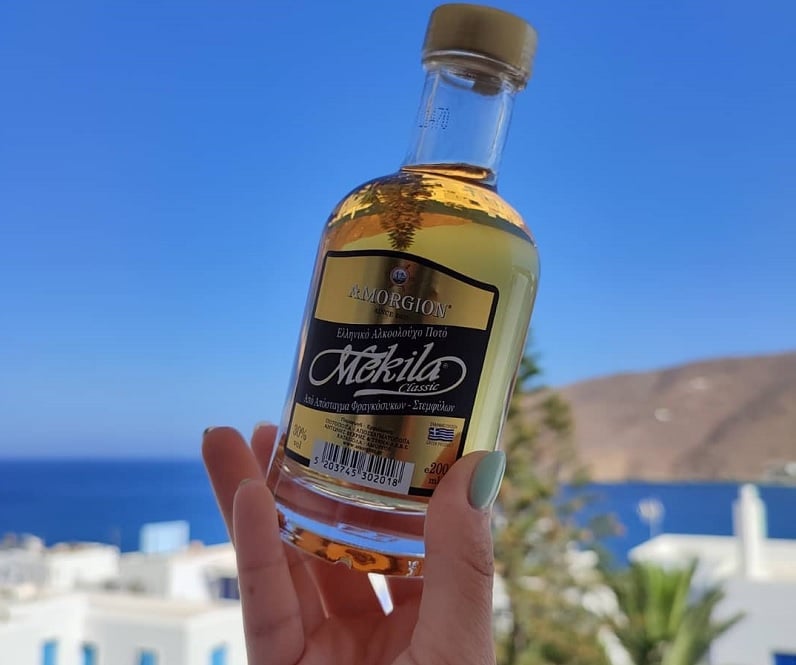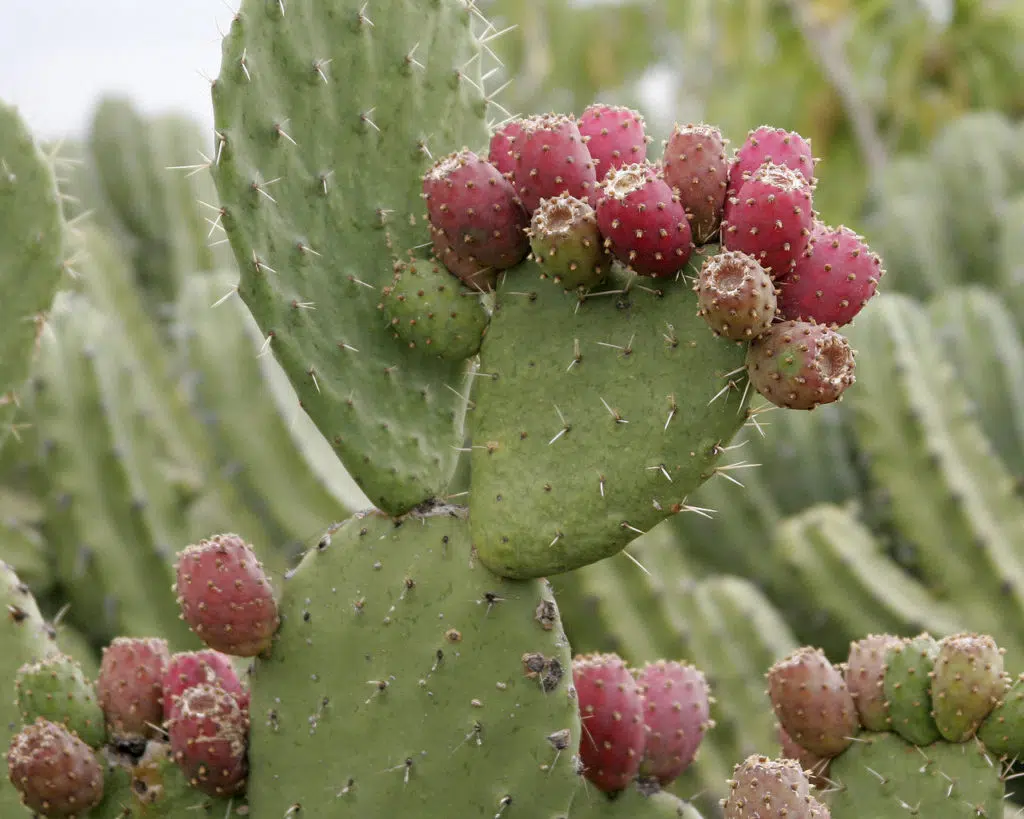
Mekila, known as “the Greek tequila,” is a drink proudly made on the Greek island of Amorgos courtesy of the many prickly pear cacti that grow on the island.
Antonis Vekris, the Amorgian who founded Mekila, is rightfully proud for coming up with a Greek libation that can rival the popular tequila drink.
After all, prickly pears come from a cactus plant, the Opuntia littoralis, just like tequila is made from the juice of another type of cactus, the agave.
It’s all in the cactus
In fact, like its Mexican “sibling,” mekila comes in clear and golden colors. Whether it is better than tequila or not is entirely in the palate of the beholder.
Its maker, Antonis Vekris, spoke to the website Newsbomb about his idea to make a spirit out of the wild prickly fruit that is abundant in Greece which sadly, most of the time goes to waste.
This is a particular shame, because prickly pears have great nutritional value as well.
As a distiller, Vekris knew that tequila is made by the cactus called agave. The abundant wild prickly pears gave him the idea to make an alcoholic drink from the cactus fruits he saw all around him.
When he told his compatriots that he would start making an Amorgian tequila, they laughed.
Vekris, a restless spirit, was the one who had the last laugh, though. Even though it took years for his idea to materialize, thanks to the famous labyrinthine Greek red tape, he did it in the end.

CC BY-SA 2.5
A project that took years to materialize
To make an alcoholic drink from a fruit that most people are afraid to even come close to is not an easy endeavor.
Especially when you have to deal with the Greek state, which demands a stack of documents even for the simplest endeavor.
Vekris went to the State General Laboratory, which supervises distillers, to ask permission to distill prickly pears and if it made a good distillate, to create a new drink called “Mekila.”
The organization gave him permission to produce 10 liters of the liquor and take it there for analysis. If it was good, they would give him permission to produce and distribute his drink.
Analyses showed that the prickly pear extract was of the highest quality; that prompted Vekris to set up a distillery to legally distill prickly pears, hoping he would be able to distribute the drink in stores.
From 2008 to 2012, he struggled with the country’s famous bureaucracy to get permission to distill his prickly pears and make Mekila.
The reason for the delay, as the State General Laboratory officials informed him, was that there was neither law nor regulations for the distillation of prickly pear, since no distillery had ever asked for such a permit before.
Greek tequila is mekila
Vekris eventually founded his own distillery on Amorgos and started to produce liquor from the wild prickly pears of the island.
He named it Mekila, with the ‘me’ standing for meli (honey in Greek) since the drink contains honey.
He actually produced three drinks: White mekila, which is in its original form; yellow mekila, which has a little honey in it to appeal to more people; and an aged liqueur, a 100-percent distillate aged in oak barrels for three years, which he calls “prickly pear honey.”
Mekila has won a gold medal for its quality and exotic taste, and prickly pear honey has also won its own gold medal.
The maker believes that his drink is better than its Mexican counterpart because it is produced from a wild fruit, not from a cactus.
In addition, it is produced by a small Greek distillery with great care and in small batches in order to maintain its quality and taste.
Health properties of the prickly pear
Ironically, given the production of Mekila, prickly pear itself reduces the intensity of intoxication symptoms.
Prickly pear is a summer fruit, with juicy flesh and a unique taste. It is found mostly in the Peloponnese and the Greek islands. Its origin is from Central America, but it was brought to Europe by Spanish seafarers in the 15th and 16th centuries.
Its cylindrical fruit varies from yellow-green to orange (when ripe) and is eaten raw, cooked, or made into juice and jam. Harvesting and cleaning may take time and effort, but its taste and nutritional value compensate for the effort put into it.
A cup of peeled prickly pear (about 150 grams) provides 61 calories and gives us 14 grams of carbohydrates, one gram of protein and 0.8 grams of fat.
It is also rich in fiber, both insoluble and soluble (in the form of pectin). One serving of prickly pear covers 14 percent of the recommended daily allowance of fiber for men and 21 percent for women.
Other than fiber helping in the proper functioning of the digestive system, it is good for the prevention of some chronic diseases as well.
It is rich in vitamin C, as one cup provides 35 percent of the recommended daily allowance of vitamin C, which has a strong antioxidant effect and plays an important role in many functions of the human body.
In terms of minerals, prickly pears have a good content of calcium, magnesium, potassium and copper.
Studies also show that its consumption can lower glucose levels in patients with Type 2 diabetes.
However, eating prickly pears can create some side effects so it is advisable to watch out for people suffering from gastrointestinal disorders such as irritable bowel syndrome and inflammatory bowel disease.
See all the latest news from Greece and the world at Greekreporter.com. Contact our newsroom to report an update or send your story, photos and videos. Follow GR on Google News and subscribe here to our daily email!



